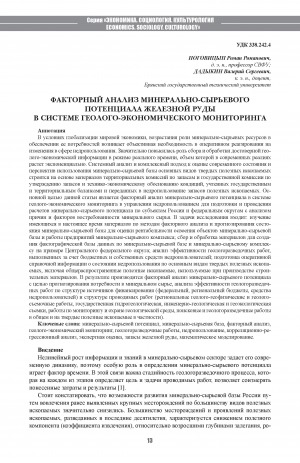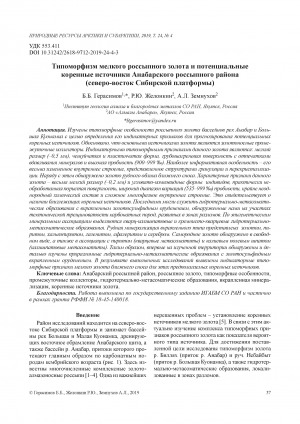Анализируются природа, объёмы накопления и состав техногенного минерального сырья Российской Федерации, оцениваемого в 43,5 млрд. долл. США, что в 4 раза превышает стоимость разведанных ресурсов. Доля техногенного сырья в общей структуре ресурсов и запасов золота страны составляет 7-12 % и оценивается экспертами в 5000 т. Для регионов недропользования Урала, Сибири и Дальнего Востока, включая Республику Саха (Якутию), проблемы освоения техногенного минерального сырья актуальны. Рассматриваются природа образования, вещественный состав и особенности нахождения золота в разнотипном техногенном минеральном сырье Южного Урала, представленного лежалыми хвостами перколяции ЗИФ, пиритной флотации, шлаками золо-томедного завода, пиритными огарками сернокислотного производства, эфелями бегунных фабрик, россыпями, отсевами месторождений песчано-гравийных материалов и др. Для ДФО и РС(Я) на примере техногенных россыпей, хвостов ЗИФ и др. показаны региональные особенности и перспективы ресайклинга золота из отходов недропользования. Необходимо создание региональных банков минералогических данных технологических особенностей самородного золота разнотипного природного и техногенного минерального сырья. Предлагается включить курс ҺТехнологическая минералогияһ в учебные планы профессиональной подготовки геологов. Комплексные научные и прикладные минералогические исследования полезных компонентов в составе разнотипного техногенного сырья целесообразно организовать в рамках программ ҺТехнологической платформы Твёрдые полезные ископаемыеһ, участниками которой являются СВФУ им. М.К. Аммосова, БашГУ и другие учебные и научные центры. Освоение техногенного минерального сырья с использованием инновационных подходов и передовых технологий наряду с коммерческой выгодой снижает экологические риски недропользования, чем способствует созданию позитивного имиджа территории.
The nature, volumes of accumulation and composition of technogenic mineral raw materials of the Russian Federation estimated in 43,5 billion US dollars, that in 4 times exceeds cost of the reconnoitered resources are analyzed. The share of technogenic raw materials in the general structure of resources and gold reserves of the country is 7-12% and is estimated by experts at 5,000 tonnes. For subsoil use regions of the Urals, Siberia and the Far East, including the Republic of Sakha (Yakutia), the problems of developing technogenic mineral raw materials are relevant. The nature of formation, material composition and peculiarities of finding gold in various types of technogenic mineral raw materials of the Southern Urals are considered. The raw materials are presented by the tailings of percolation of the mill, pyrite flotation, slags of the goldmine plant, pyritic cinder of sulfuric acid production, ephems of runner factories, placers, screenings of sand and gravel deposits, etc. For the Far Eastern Federal District and the RS (Y), regional examples and prospects for recycling gold from waste subsoil are shown on the example of technogenic placers, tailings of the mill, etc. It is necessary to create regional banks of mineralogical data of technological features of native gold of various types of natural and technogenic mineral raw materials. It is proposed to include the course ҺTechnological Mineralogyһ in the curricula of vocational training of geologists. Complex scientific and applied mineralogical research of useful components in the composition of diverse types of technogenic raw materials is expedient for organizing within the framework of programs of the ҺTechnological Platform Solid Mineralsһ in which the NEFU named after M.K. Ammosov, Bashkir State University and other educational and scientific centers are members. The development of technogenic mineral raw materials with the use of innovative approaches and advanced technologies along with commercial benefits reduces environmental risks of subsoil use, thus contributing to creation of a positive image of a territory. Key words: technogenic mineral raw materials, placer, gold, useful components, recycling, hydrometallurgy, technological mineralogy, ecological risk.












